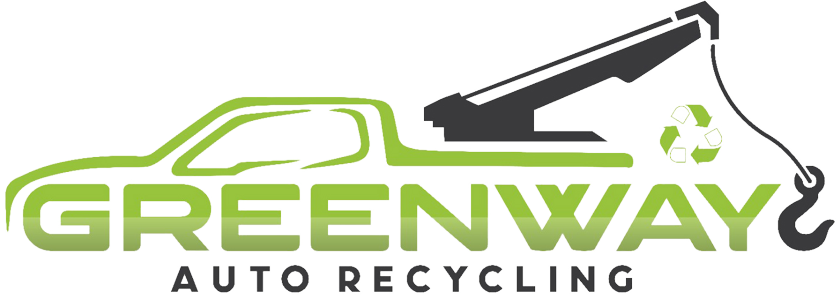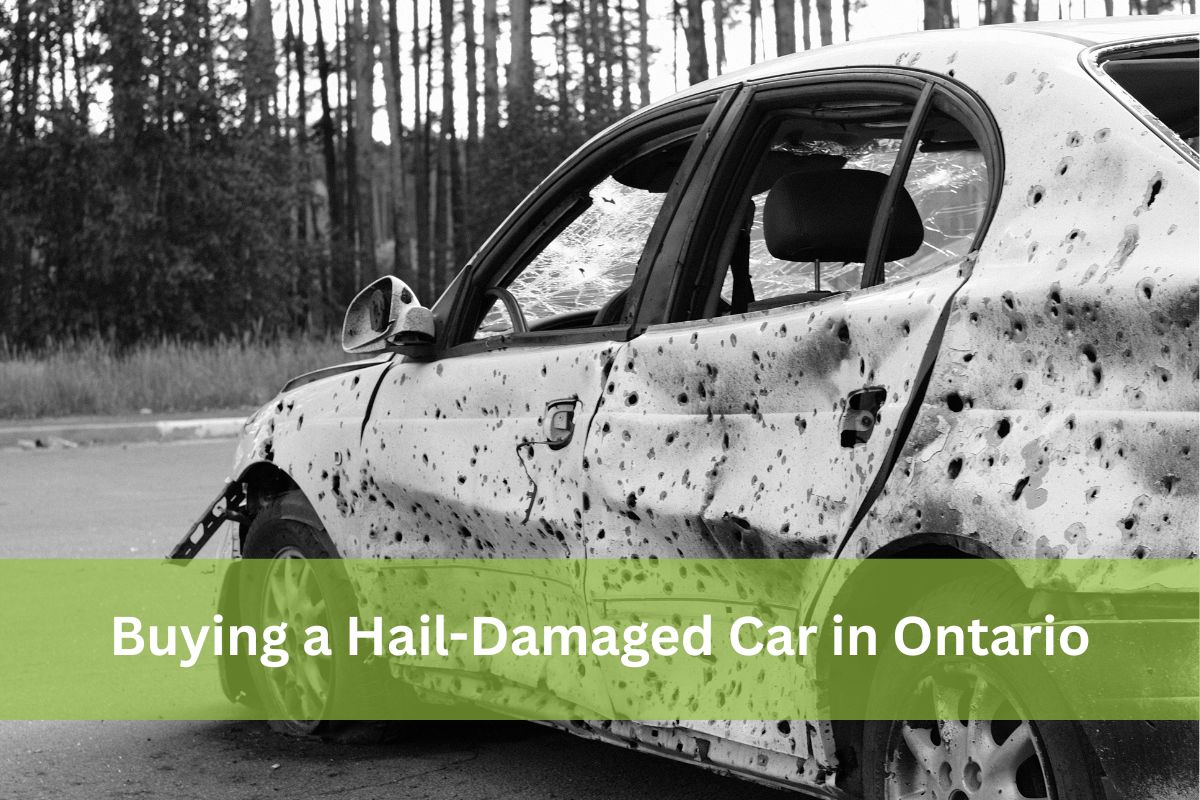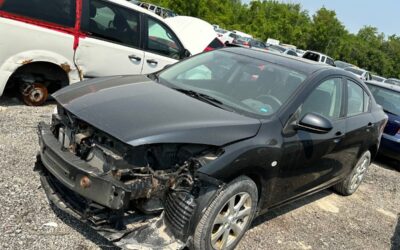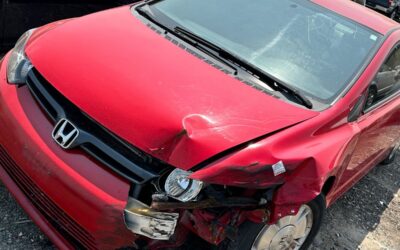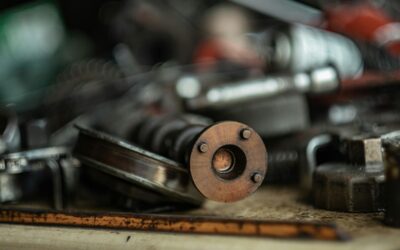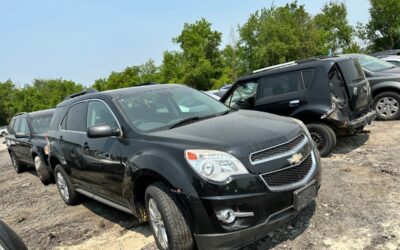Introduction
People are always searching for an affordable car in Ontario, so hail-damaged vehicles can sometimes be appealing. They are available at a reduced cost to average used car pricing because they are identifiable with visible dents and body damage that hailstorms can leave behind.
The initial savings might seem attractive, but it’s important to understand what you’re getting into before closing the deal. Hail damage can affect more than just the aesthetics of a vehicle. It may also affect the resale value, insurance, and possibly even safety in some instances. In this article, we’ll outline everything you need to know before purchasing a vehicle with hail damage in Ontario.
What Is A Hail Damaged Car?
Hail-damaged cars are vehicles that have dents, cracks, or broken parts due to falling hailstones in a storm. In Ontario, hailstorms happen frequently enough that they can cause significant damage to vehicles parked outside. Damage may include small dents to the hood, roof, and trunk of the vehicle, broken windshields or side mirrors. Some vehicles may only have minor cosmetic issues, while others could suffer from more severe damage, such as water leaks or electrical issues caused by shattered glass.
Hail-damaged vehicles are often sold at auction by car dealers or insurance companies as “as-is” listings because it makes more financial sense to sell the car than to repair it. Vehicle owners may also sell their hail-damaged vehicles privately. Suppose you are thinking about purchasing a vehicle with hail damage. In that case, it is important to determine if the damage is only visual or if the hail damage has compromised the vehicle’s safety and performance.
Things to Review Before Buying a Hail-Damaged Vehicle
Prior to purchasing, there are a couple of important areas that you want to assess so you do not end up with an expensive surprise. Not all hail-damaged vehicles are the same. Some have minimal imperfections, while others have serious issues that may be lurking beneath the skin. Always check:
- Body panels and paint: For every visible surface, check for dents, scratches, and cracks. When body panels are heavily dented, they may not be structurally sound; chipped paint can lead to rust.
- Glass damage: Review all glass: windshields, windows, and mirrors for chips and cracks. Not all chips make a windshield unsafe; just be aware that many car-wash insurance claims start with a cracked windshield.
- Electrical Components: If water entered through a crack in the glass, the wiring and/or sensors may have been compromised. Test all electrical components, such as wipers, lights, and the infotainment environment.
- Roof/Trunk Seals: Examine for water leakage or damaged rubber seals. Moisture can lead to mold or damage to the car’s interior.
- Airbags and Safety Features: Confirm all airbags and safety features worked. Hail may have affected sensors and parts, and safety features may not work in an emergency.
Also Read: The Scrap Car Glossary: Key Terms You Should Know
Considerations for Insuring Hail Damage to Your Vehicle
Be informed on how insurance may or may not apply to these vehicles in Ontario. Here are some considerations that you must know to ensure hail damage to your car:
-
- Pre-existing damage is likely not covered
- Comprehensive coverage is needed for protection against future hail
- Insurance premiums may still be higher for damaged vehicles
- Salvage title vehicles can be more difficult to insure
- Claim payouts may be reduced
- Get the damage report before insuring
- Some insurers may only offer liability coverage on these vehicles
- Check for hail exclusions with your insurer policies
- Ask about coverage, cosmetic vs. safety repairs
- Confirm insurance before finalizing your purchase.
Can You Repair a Hail-Damaged Car?
Yes, you can repair hail-damaged cars, but costs vary depending on the type of damage. Common repair methods include:
- Paintless Dent Repair (PDR):
Technicians remove minor dents without affecting the paint. This is affordable for small dents and doesn’t affect the car’s resale value.
- Traditional Body Repair:
For deeper dents or scratches, body shops use filler and repaint affected panels. It’s more expensive but restores the original look.
- Glass Replacement:
Broken windshields and windows must be replaced. Prices depend on the car’s make and model.
Before deciding to repair, get a cost estimate. In some cases, the cost of repairs may exceed the car’s actual value. In that case, you might be better off keeping the car as-is if it’s safe to drive or selling it for parts or scrap.
Where to Buy Hail-Damaged Vehicles in Ontario?
Here’s where you can safely find and buy hail-damaged vehicles in Ontario. In Ontario, you are most likely to find hail-damaged vehicles from:
- Auto Auctions: There are public and dealer-only auctions that typically process hail-damaged vehicles. Some take place online, and some are in local yards.
- Insurance Salvage Auctions: Insurance companies write off vehicles and then send the vehicles to salvage auctions like Impact Auto Auctions or Copart.
- Dealer Clearance: Some dealers have cleared hail-damaged stock. A vehicle with damage typically discloses that damage.
- Private Sale: You will also find this type of vehicle in your local classifieds, Facebook Marketplace, Kijiji, and like sites.
Legal Documents and Ownership Transfer in Ontario
Make sure you have the proper paperwork and follow Ontario’s rules when transferring ownership of a hail-damaged vehicle. In Ontario, if you buy any used vehicle, including a hail-damaged one, there are legal documents you will want. You will need:
- Vehicle Ownership Permit: This is the registration document for the vehicle. It identifies the vehicle, along with the owner’s name.
- Used Vehicle Information Package (UVIP): You get this package from the Ministry of Transportation if you buy a vehicle privately. It is required by law. This package will give you the history of the car, ie, previous owners, reported liens against the car, and so forth.
- Bill of Sale: This is the document identifying the sale of the car. A Bill of Sale includes the seller’s name, the buyer’s name, the details of the vehicle, the price, and the date of the sale.
- Safety Standards Certificate: This certificate is necessary if you plan to register and drive the vehicle on the streets. If you do not have the Safety Standards Certificate, you will be unable to put the vehicle on plates.
Also Read: 9 Essential Tips to Safely Sell Your Scrap Car & Avoid Scams
Should You Buy a Hail-Damaged Car?
A hail-damaged vehicle can be a smart purchase if you prioritize budget over appearance and ensure it’s mechanically sound. You should always:
-
- Inspect the car carefully or hire a mechanic
- Check repair and insurance costs
- Review the car’s history and title status
- Confirm that safety systems work properly
Conclusion
Some hail-damaged vehicles, despite extensive repair efforts, will not hold up too long. If you’re the owner of a hail-stricken automobile in Ontario that is no longer safe or worth repairing, then Greenway Auto Recycling is here to assist you! We offer stress-free scrap car removal services throughout Ontario. We take care of removing your old automobile, assist with the return of your license plate, and assist with related paperwork wherever possible.
There are no hidden costs or last-minute discounts – just good, straightforward services from people who want to see the process as easy as possible. When it is time to part ways with your hail-damaged or junk vehicle, we would be proud to assist you.
